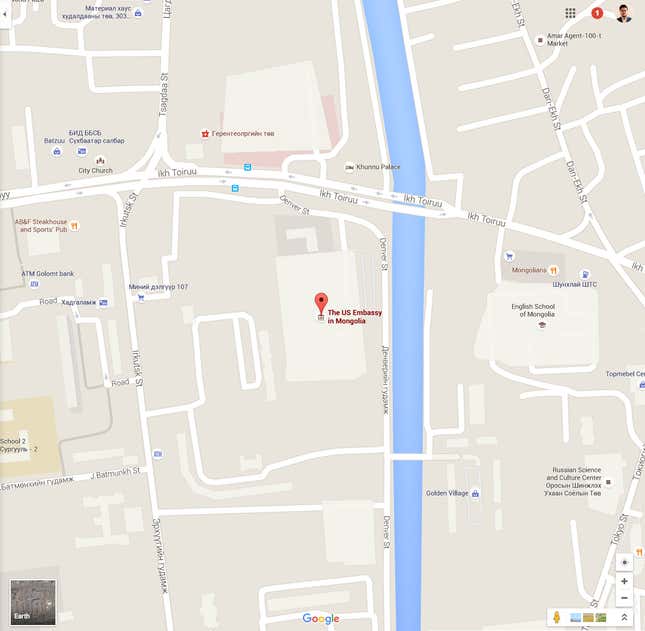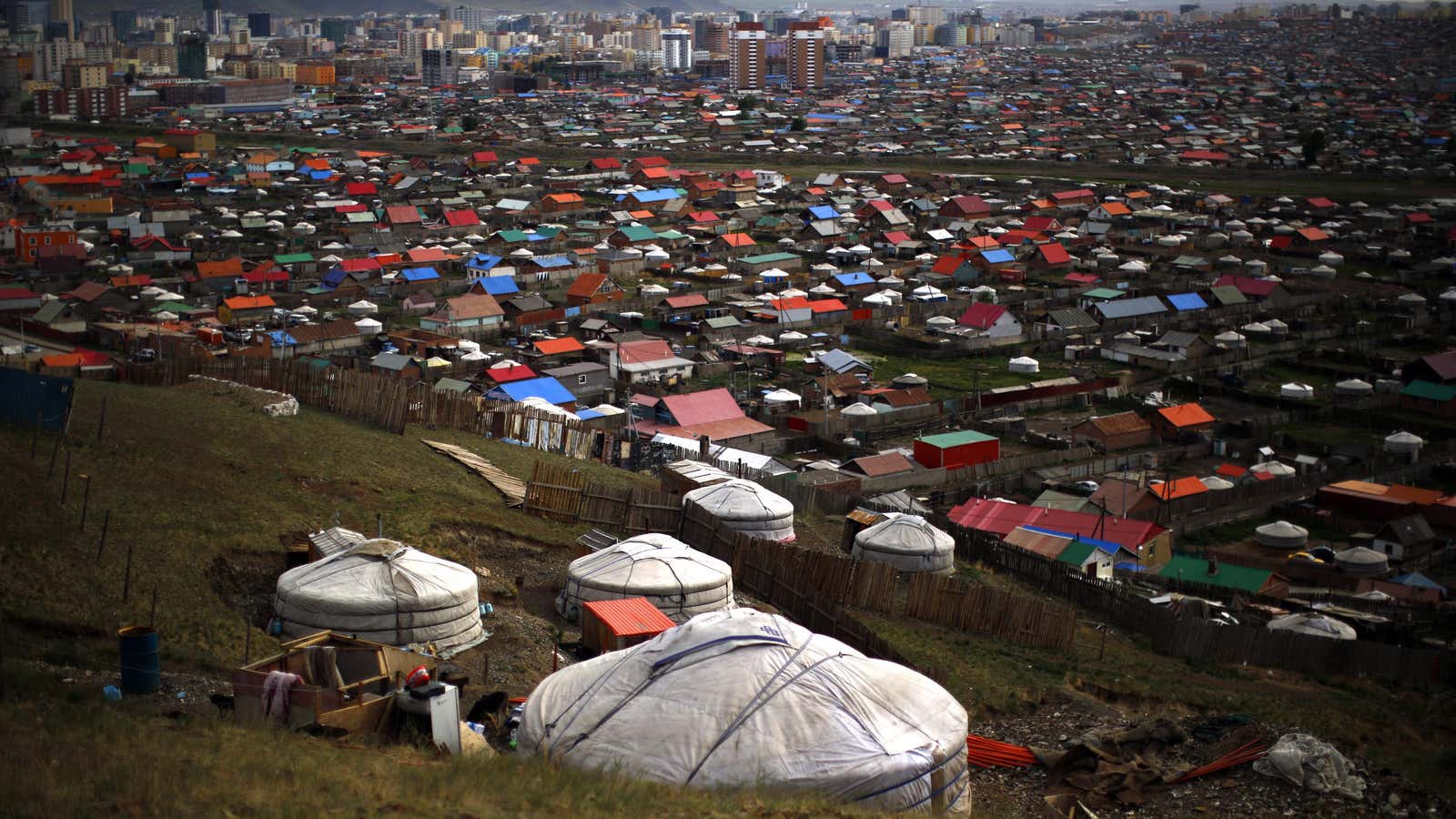Mongolia will become a global pioneer next month, when its national post office starts referring to locations by a series of three-word phrases instead of house numbers and street names.
The new system is devised by a British startup called What3Words, which has assigned a three-word phrase to every point on the globe. The system is designed to solve the an often-ignored problem of 75% of the earth’s population, an estimated 4 billion people, who have no address for mailing purposes, making it difficult to open a bank account, get a delivery, or be reached in an emergency. In What3Words’ system, the idea is that a series of words is easier to remember than the strings of number that make up GPS coordinates. Each unique phrase corresponds to a specific 9-square-meter spot on the map.
For example, the White House, at 1600 Pennsylvania Avenue, becomes sulk.held.raves; the Tokyo Tower is located at fans.helpless.collects; and the Stade de France is at reporter.smoker.received.
Mongolians will be the first to use the system for government mail delivery, but organizations including the United Nations, courier companies, and mapping firms like Navmii already use What3Words’ system.
Mongol Post is switching to the What3Words system because there are too few named streets in its territory. The mail network provides service over 1.5 million square km (580,000 square miles), an area that’s three times the size of Spain, though much of that area is uninhabited. Mongolia is among the world’s most sparsely populated countries, and about a quarter of its population is nomadic, according to the World Bank.
Even in the capital city of Ulaanbataar, not all streets are named. When people don’t have a street address, the current solution is for them to travel to a collection point to pick up their post, says Chris Sheldrick, the co-founder and chief executive of What3Words. People have to write a series of detailed directions, in addition to the address, so that mail-delivery people know where to drop off letters, Sheldrick says.
For example, the new system would change the address of the US Embassy in Mongolia from:
US Embassy
Denver Street #3
11th Micro-District
Ulaanbaatar 14190
Mongolia
The new address will simply be: constants.stuffy.activism
Here’s the embassy’s location according to Google Maps and according again,on What3Words’ map.


You’ll see that the two points correspond, although the What3Words address offers more fine-grained pinpointing of the embassy’s entrance.
Mongol Post will start using the system sometime next month, Sheldrick says. In practice, this means it will pay What3Words to license a bit of software that converts three-word addresses into GPS coordinates. When a piece of mail with a three-word address enters the postal system, it’ll be converted into GPS coordinates for delivery. Users can look up these three-word locations, which have been translated into Mongolian, for free on the What3Words website or app.
Correction: An earlier version of this article said What3Words uses 3-square-meter spots on the map. It actually uses 9-square-meter spots. The three-word address for the Stade De France was also corrected from reporter.smoked.received.
